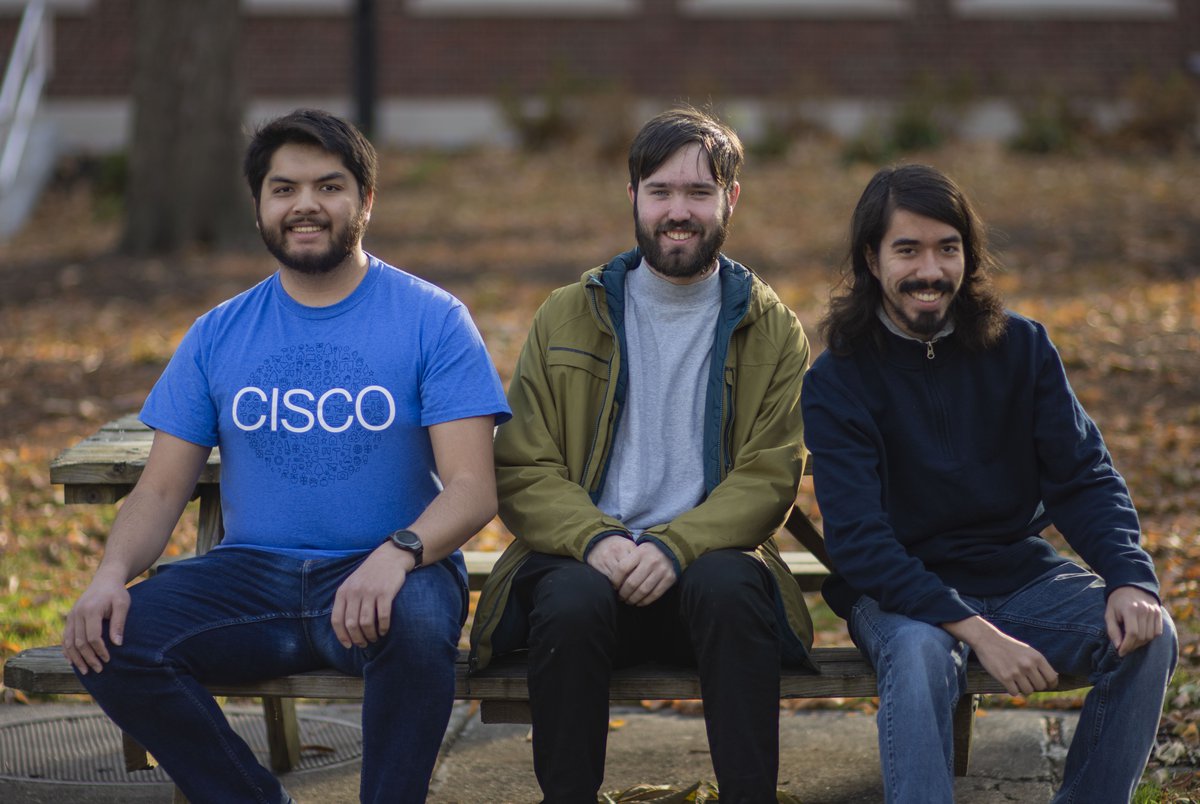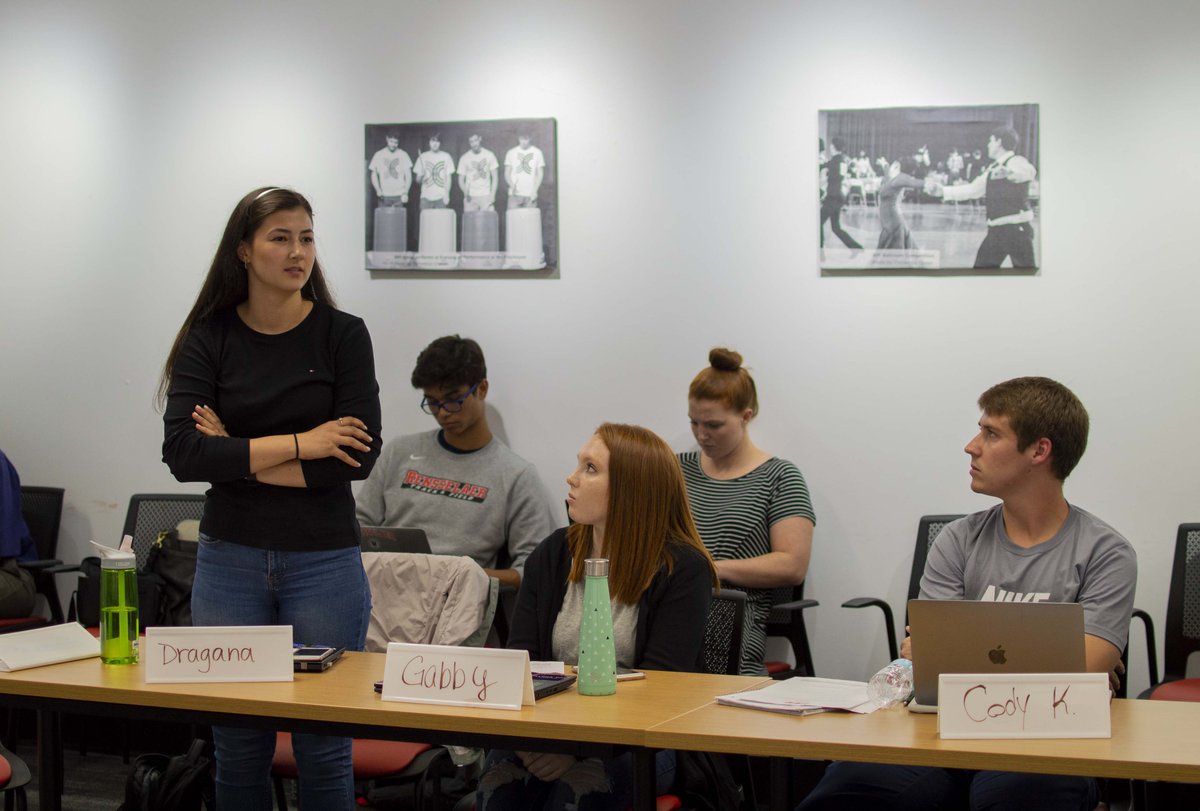Students work on AI, natural disaster, education solutions at HackRPI

An accessibility assessment application, a wildfire detection device, a disaster evacuation application, and a peer-to-peer service were all developed within a day at the Darrin Communications Center at HackRPI.
This year’s HackRPI covered three themes: natural disaster and mitigation, accessibility to education, and artificial intelligence. All participants had 25 hours over the weekend of November 2 to complete and submit a project that fits within the dimensions of the given themes. Here are some of the winners from all three themes.
Best Accessibility to Education Hack: First Place
The winning team—consisting of James Flamino ’20, Omar Malik, Sam Cohen, and Fred Buchanan—built an application called Aid for Accessibility, which listens to a lecture and gives feedback on how accessible the lecture is. To better measure what is considered accessible, the application compares the recorded lecture to a list of accessibility features derived from the Council of Ontario Universities.
Team members used various Google Cloud features within this project; Google’s speech-to-text feature was used to break down the recorded lecture, whereas Google’s topic extraction feature—a tool that extracts the topic from a given text—was used to check whether the lecture stayed on topic throughout the given time period.
For their recognition, the team was given the Best Use of Google Cloud Award, and received Google Homes and 3D printer pens. Buchanan described this as his third hackathon on campus, and enjoyed working in this group; all four members know each other as they all do research for Professor Boleslaw Szymanski. Buchanan also noted that the HackRPI organizers did a fantastic job in putting together the event.
Best Artificial Intelligence Hack: First Place
The winners for this category are students from SUNY Albany. Team members Ian Walter, Carolyn Kaminski, Eric Papas, and Mahnoor Amir worked on a project called FireWatch. This application serves as a wildfire detection device that uses artificial intelligence. Reflecting on their project, Amir said, “We trained a neural network to recognize fires in images. We then uploaded the model onto the Google Coral Edge TPU, a single-board computer equipped with a camera. This camera would be able to get real-time footage, and when it sees a fire, it will send a signal to a web application notifying users of the fire location.”
The team was recognized as having the best use of artificial intelligence in their project, and received prizes—including a bluetooth speaker—that totaled $600.
While this was Amir’s second time attending HackRPI, this was his first time using IBM Cloud and various other technologies, which he described as a “wonderful learning experience.” Due to the hackathon’s time constraint, Amir would like to continue working on their project so that the team can better integrate the different technologies used within their application.
Best Natural Disaster and Mitigation Hack: First Place
The winning team for the natural disaster and mitigation category included Leon Montealegre ’20 and Rylan Gupta ’20. Team members were awarded $1000 in cash as well as one ticket to the Clinton Global Initiative University Conference at the University of Edinburgh in Scotland. This conference is held annually to discuss global challenges and social change, bringing together students and topic experts from around the world.
Best Natural Disaster and Mitigation Hack: Second Place
Coming in at second place, Matthew Czyr ’21 and Michael Peters ’21 worked on a project—titled EvacSim—that informs residents when and where to evacuate based on a simulated natural disaster. Their program’s algorithm uses weather data to organize evacuations given the number of people affected and considers their current locations. Finally, all of the analysis is shown using Google Maps.
Czyr and Peters were awarded the Wolfram Alpha Award as well as $500 for their recognition in this category. This was Peters’ first hackathon, which he said taught him a lot about programming under pressure. He also stated that he learned a lot about programming under pressure during this experience. Peters said their team performed at “light speed” and submitted their application within the final seconds of the hackathon.
Best Natural Disaster and Mitigation Hack: Third Place
In third place, team members Grace Roller ’20, Xavier Boudreau ’20, Ethan Graf ’21, and Technology Director at The Polytechnic Joseph Lyon ’20 created an application called Disasterpeer—a service for assisting disaster mitigation. This application enables first responders to collect necessary information by using a peer-to-peer network with encrypted messages, where only first responders can access the users’ location data.
Team members supported their application by including analysis from a simulated disaster in the Rensselaer area. Within this simulation, a certain number of people were originally unaccounted for. Based on their locations—which were gradually learned through the program—help was sent to the missing people.
IBM awarded this team with the IBM Disaster Mitigation Hack Award. In addition, team members received the Wolfram Alpha Award and $250. As this was his third hackathon, Lyon mentioned that he participated not for the prize, but to have fun with his friends.
Be sure to check out HackRPI next time if you are interested in organizing, volunteering, or participating in the event.

 Committee Spotlight
Committee Spotlight